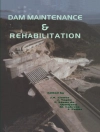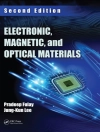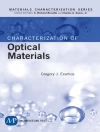This book describes a series of contemporary techniques and their combinations used for CNTs solubilization, from physical to chemical and biological, applying inorganic and organic compounds, as well as some metal complexes. In some cases, successive steps can be applied, for instance the use of low and high-weight surfactants, or mineral acid treatment for creation of –OH and –COOH groups and their further interaction with organic molecules. Each discussed method leads to an improvement of CNT solubility, frequently a considerable one. The formed dispersions can be stable for long periods of time, from several weeks to some months, and they sometimes even remain stable after centrifugation. Several special studies have been carried out in the areas of influence of solvent and light on CNTs dispersibility, combinations and abilities of surfactants, CNT cytotoxicity, etc. Applications of solubilized CNTs are discussed in this book as well.
Cuprins
Chapter 1. Introduction.- Chapter 2. Physical Methods.- Chapter 3. Chemical Methods.- Chapter 4.Biological/Biochemical Methods.- Chapter 5. Special Studies and Characterization of CNT’s Dispersions.- Chapter 6. Cost and Main Applications of Soluble CNT’s.- Chapter 7. Training on Solubilization of CNT’s.- Chapter 8. Conclusions and Further Outlook.
Despre autor
Dr. Oxana V. Kharissova (born in 1969 in Ukraine, former USSR, has lived in Mexico from 1995, and naturalized in Mexico in 2004) is currently a Professor and Researcher at the Universidad Autónoma de Nuevo León (UANL). Degrees: M.Sc. in 1994, in crystallography from Moscow State University, Russia, and a Ph.D. in Materials from the Universidad Autónoma de Nuevo León, Mexico. Memberships: National Researchers System (SNI, Level II), Materials Research Society, Mexican Academy of Science. She is the co-author of five books, 12 book chapters, 80 articles, and holds eight patents. Specialties: Materials, nanotechnology (carbon nanotubes, graphene, nanostructurized metals, fullerenes), microwave irradiation and crystallography; nanotechnology-based methods for petroleum treatment. Dr. Kharissova holds the awards “Flama, Vida y Mujer 2017” and “Tecnos” (2004). She is an expert of the National Council for Science & Technology of Mexico (Conacyt). Dr. Kharissova has three children.
Dr. Boris I. Kharisov (born in 1964, in Russia, has lived in Mexico from 1994, and naturalized in Mexico in 2003) is currently a Professor and Researcher at the Universidad Autónoma de Nuevo León (UANL). He took part in the liquidation of the consequences of the Chernobyl accident, working in the contaminated zone in 1987. Degrees: An MS in 1986, in radiochemistry and a Ph D in inorganic chemistry in 1993, from the Moscow State University, Russia; Dr. Hab. in physical chemistry in 2006 from Rostov State University, Russia. Memberships: Mexican Academy of Science, National Researchers System (SNI, Level II), Materials Research Society. He is the co-author of nine books, 161 articles, 10 book chapters, and holds four patents. Co-editor: Three invited special issues of international journals. He is the member of the Editorial board of three journals. Specialties: Materials chemistry, coordination and inorganic chemistry, phthalocyanines, ultrasound, nanotechnology, chemical treatment of petroleum, environmental remediation. Dr. Kharisov has three children. His biography was published in: “Who is Who in the World”, “Outstanding People of the Twentieth Century”, and so on.












